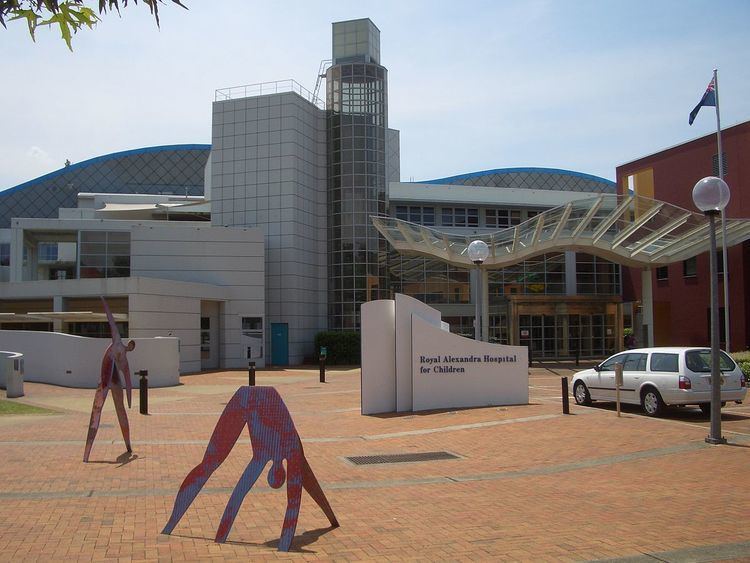Care system Public Medicare (AU) Emergency department Yes Website www.chw.edu.au Number of beds 340 Affiliated university University of Sydney | Hospital type Teaching Speciality Children's hospital Phone +61 2 9845 0000 Founded 1880 | |
 | ||
Location Westmead, Sydney, New South Wales, Australia Address 170 Hawkesbury Rd, Westmead NSW 2145, Australia | ||
The Royal Alexandra Hospital for Children (also known as The Children's Hospital at Westmead) is a children's hospital in Sydney, New South Wales. The Hospital was founded in 1880 as "The Sydney Hospital for Sick Children". Its name was changed to the "Royal Alexandra Hospital for Children" on 4 January 1904 when King Edward VII granted use of the appellation ‘Royal’ and his consort, Queen Alexandra, consented to the use of her name.
Contents
It is one of three children's hospitals in New South Wales. It is currently located on Hawkesbury Road in Westmead and is affiliated with the University of Sydney.
On 1 July 2010 it became part of the newly formed 'Sydney Children's Hospital Network (Randwick and Westmead) incorporating the Royal Alexandra Hospital for Children'.
Name and relocation
The hospital was opened in 1880 as the Sydney Hospital for Sick Children by a group of concerned citizens, led by Lady Allen the wife of Sir George Wigram Allen, who were worried about the health of the younger members of society in New South Wales. It soon out-grew the small building in which it was housed at Glebe Point. In 1906 it moved to a much grander building, designed by Harry Kent in Camperdown, where it stayed for 89 years, where it was known as the Camperdown Children's Hospital.
In 1995, the hospital was relocated to its current location in Westmead to better serve the growing populations of western Sydney.
This relocation involved amalgamation with most of the paediatric services of nearby Westmead Hospital (apart from neonates) to form a new hospital with a new name; initially "The New Children's Hospital" and more recently "The Children's Hospital at Westmead". The official name of the hospital; the "Royal Alexandra Hospital for Children" is retained.
Notable doctors and board members
Some notable individuals connected to the history of the Children's Hospital are:
Notable patients
Some notable individuals connected to the history of the Children's Hospital are:
Adolescent health
The Adolescent Medicine at The Children's Hospital at Westmead seeks to improve the health and well-being of young people aged 12 – 24. The key focus areas include developing information and resources; capacity building to increase workers’ skills and confidence in adolescent health; supporting applied research; advocacy & policy development to increase leadership and action for adolescent health.
The hospital provides a transgender support service for gender dysphoria, for which demand has "tripled", with the youngest client being a four-year-old who has identified as transgender. While clinical psychologist Rose Cantali said that age is, "absolutely too early" for a child to change gender, transgender gynaecologist Rosemary Jones has said that four is a "good age" and that "parents who have any sense can usually pick it".
